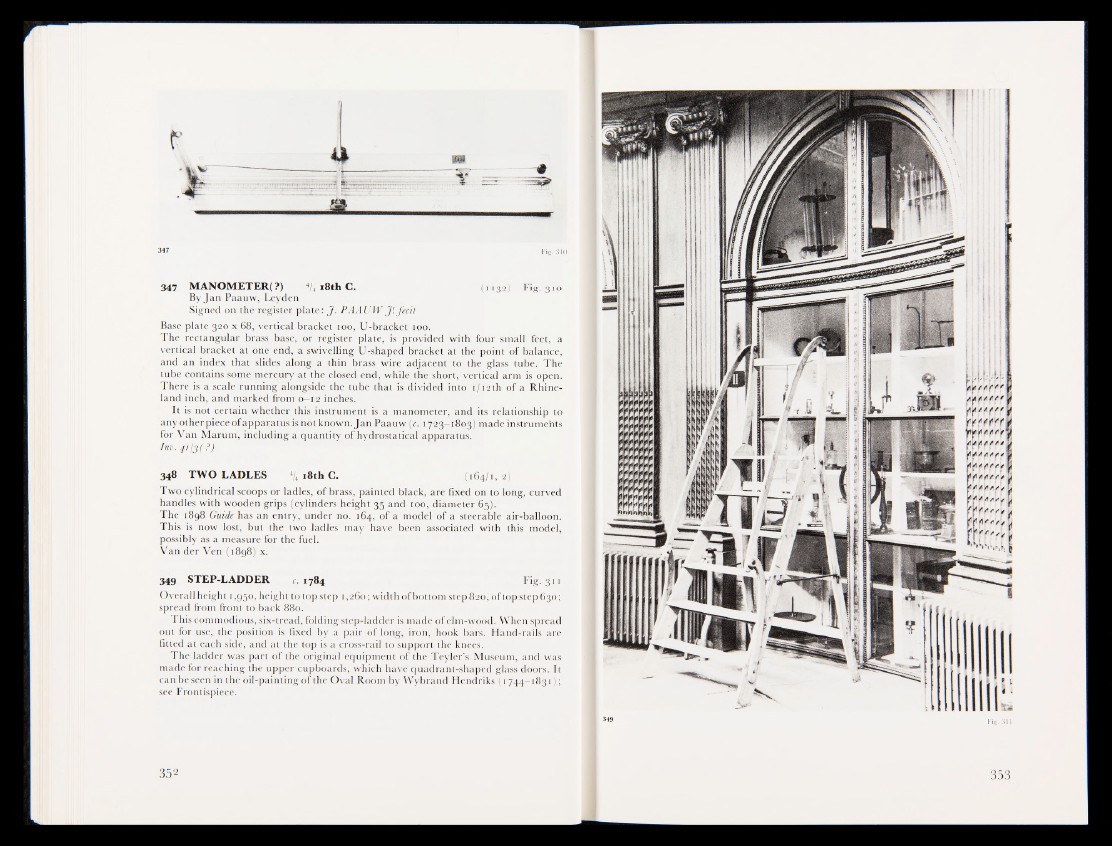
347 Fig I 3:10
347 MANOMETER(?) 4/4 i8th C. (i igjs§§ Fig. 310
By Jan Paauw, Leyden
Signed on the register plate: J. PAAUW J r. fecit
Base plate 320 x 68, vertical bracket 100, U-bracket 100.
The rectangular brass base, or register plate, is provided with four small feet, a
vertical bracket at onë end, a swivelling U-shaped bracket at the point of balance,
and an index that slides along a thin brass wire adjacent to the glass tube. The
tube contains some mercury at the closed end, while the short, vertical arm is open.
There is a scale running alongside the tube that is divided into 1 /12th of a Rhineland
inch, and marked from 0—12 inches.
It is not certain whether this instrument is a manometer, and its relationship to
any other piece of apparatus is notknown.Jan Paauw f e. 1723 1803) made instrumchts
for Van Marum, including a quantity of hydrostatical apparatus.
Inv. .pi3 (?) I '
348 TWO LADLES 4/4 18th C.
Two cylindrical scoops or ladles, of brass, painted black, are fixed on to long, curved
handles with wooden grips (cylinders height 35 and 100, diameter 6 J i l l
The 1898 Guide has an entry, under no. 164, of a model of a steerable air-balloon.
This is now lost, but the two ladles may have been associated with this model,
possibly as a measure for the fuel.
Van der Ven (1898) x.
349 STEP-LADDER c. 1784 Fig. 311
Overall height 1,950, height to top step 1,260; width of bottom step 820, of top step 630;
spread from front to back 880.
This commodious, six-tread, folding step-ladder is made of elm-wood. When spread
out for use, the position is fixed by a pair of long, iron, hook bars. Hand-rails are
fitted at each side, and at the top is a cross-rail to support the knees.
Thedadder was part of the original equipment of the Teyler’s Museum, and was
made for reaching the upper cupboards, which have quadrant-shaped glass doors. It
can be seen in the oil-painting of the Oval Room by Wy,brand Hendriks (1744—1831);
see Frontispiece.
pN'N#
A*?*//' y
WffWtJl
W tW tw
u
W f f ft
VdflYwf u
W W ' f ï l
rrrrr^i